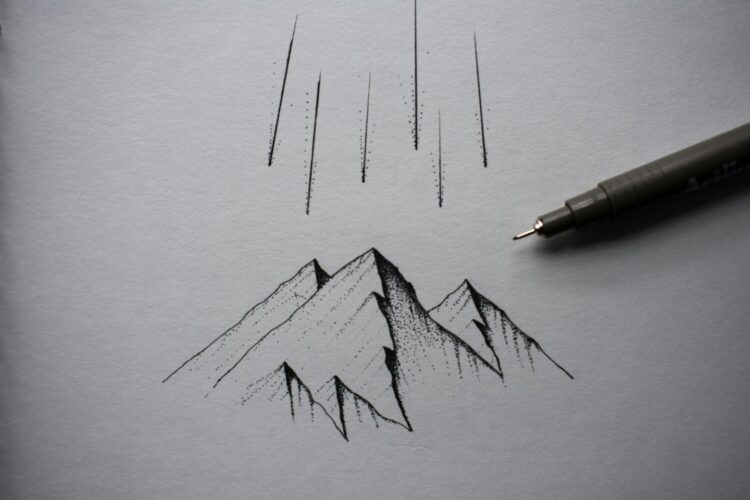
In a world overflowing with noise, complexity, and endless distractions, there’s something undeniably captivating about simplicity. It’s like the perfect cup of coffee — clean, unpretentious, and oh-so-satisfying. Welcome to the Language of Lines, where minimalist design meets maximalist impact. Think geometric patterns, sharp edges, and clean forms that speak volumes with just a few strokes. It’s art and design with a refreshingly effortless elegance that’s as timeless as your grandma’s heirloom furniture, but with the kind of innovation that makes you think, “Why didn’t I think of that?”
In this article, we’re diving deep into the intersection of minimalist creations and maximum impact. We’ll explore how working with minimalist design brands and incorporating geometric influences can shape the future of heritage design, all while staying rooted in tradition. Let’s take a lighthearted stroll through the world of minimalism, where “less is more” doesn’t mean “boring” — it’s a whole new level of cool.
Minimalism: Not Just a Trend, It’s a Language
You’ve heard it a thousand times: “Less is more.” But, let’s be real — this isn’t just some buzzword thrown around by interior designers who wear turtlenecks and sip artisanal kombucha. No, my friend, minimalism is a language — a sophisticated way of communicating ideas with fewer words. Or, in this case, fewer lines.
Picture a perfectly balanced sculpture: a series of clean, straight lines that evoke something deep, meaningful, and even profound, despite their simplicity. This is the power of minimalism. It’s the art of creating spaces and designs that speak directly to the soul without overwhelming you with excess. It’s the kind of design that allows you to breathe, to think, and, honestly, to appreciate just how much can be said with so little.
But here’s the kicker — minimalism is no longer just about empty spaces and spare aesthetics. It’s about creating maximum impact with the simplest, most essential elements. Think of a single black line cutting through a sea of white. Suddenly, that line becomes a statement. It becomes art.
Why Minimalist Designs Pack a Punch
You might be wondering: What’s so revolutionary about a few lines, shapes, and blocks of color? Well, the secret lies in the art of restraint. When you strip away the clutter and the unnecessary, you’re left with a distilled version of the message. It’s like the difference between a well-crafted haiku and a long-winded poem — minimalist designs convey just the right amount of information with clarity, precision, and emotion.
Now, let’s talk about how minimalist designs are changing the landscape of heritage and tradition. Many of today’s innovative brands are drawing inspiration from time-honored techniques, but they’re using these influences in fresh, unconventional ways. The result? A mashup of old-world craftsmanship and cutting-edge design that keeps tradition alive, while moving forward into the future.
The Geometric Influence: Old Meets New
Minimalist design isn’t just about empty space — it’s about creating harmony between form and function. And when it comes to geometric influences, the possibilities are endless. If you’re going to embrace minimalism, why not throw in some triangles, circles, and squares while you’re at it? These clean, simple shapes have been a part of design for centuries, from ancient architecture to modern art.
But here’s where it gets really interesting: modern minimalist design brands are taking these geometric shapes and reinterpreting them for the digital age. Geometric influences in today’s designs are inspired by everything from the precision of technology to the elegance of nature. Whether it’s a sleek angular chair, a minimalist building facade, or a stylized logo, geometric shapes are the backbone of modern innovation. They’re the perfect marriage between old-school craftsmanship and forward-thinking tech — creating a balance between heritage and the future.
Breaking Down the Future of Heritage
So, how do minimalist designs tie into the concept of the future of heritage? Great question! The idea here is that innovation doesn’t have to mean abandoning tradition. Instead, it’s about taking traditional design principles — like symmetry, balance, and proportion — and updating them for a new era. It’s a modern reinterpretation of heritage that still honors its roots while pushing boundaries.
Minimalist design brands are at the forefront of this movement, breathing new life into classic art forms through clean lines, geometric patterns, and innovative materials. These brands are making waves in various industries, from fashion to home décor to tech, showing us that the future of heritage doesn’t have to be stiff or stale. It can be bold, dynamic, and, most importantly, forward-thinking.
Take, for example, the rise of minimalist fashion. Designers are now embracing streamlined silhouettes and pared-down colors to create garments that exude elegance without the extra fluff. These designs are a nod to heritage techniques — tailoring, handcrafting, and high-quality materials — while embracing the future with cutting-edge textiles and construction methods.
In architecture, minimalist design has led to a shift in how we build and think about spaces. Modern buildings now incorporate large, open spaces that focus on light, air, and functionality. The design isn’t just about aesthetics — it’s about creating environments that enhance our daily lives, whether it’s through sustainable materials or smart home technology.
Working with Minimalist Design Brands
If you’re feeling inspired to embrace minimalist design in your own life or business, there are a ton of incredible minimalist design brands to work with. These brands are redefining heritage design by applying minimalist principles to everything from furniture to clothing to art.
Whether you’re looking to collaborate on a product line, showcase minimalist creations in a gallery, or simply adopt a minimalist approach to your lifestyle, there are endless opportunities to join the movement. And while we’re not saying you need to ditch your entire wardrobe for all-white everything, incorporating minimalist pieces into your design portfolio can bring a refreshing change to your work — and your life.
Embrace the Power of Lines
The language of lines isn’t just a design philosophy — it’s a way of thinking, a way of seeing the world through a lens of simplicity and clarity. By embracing minimalist designs with geometric influences, you’re not just creating art or decoration; you’re making a statement. It’s a statement that says, “I appreciate the past, but I’m not afraid to move forward.” It’s a statement that says, “I understand that less can be more.”
So, if you’re looking to make a maximum impact with minimalist creations, remember: you don’t need to fill every corner with noise. Sometimes, all it takes is one simple line, one clean shape, and one bold vision. Embrace the future of heritage, and let the power of minimalist design speak for itself.
Minimalist design, geometric influences, minimalist design brands, heritage design, future of heritage, maximum impact, language of lines




